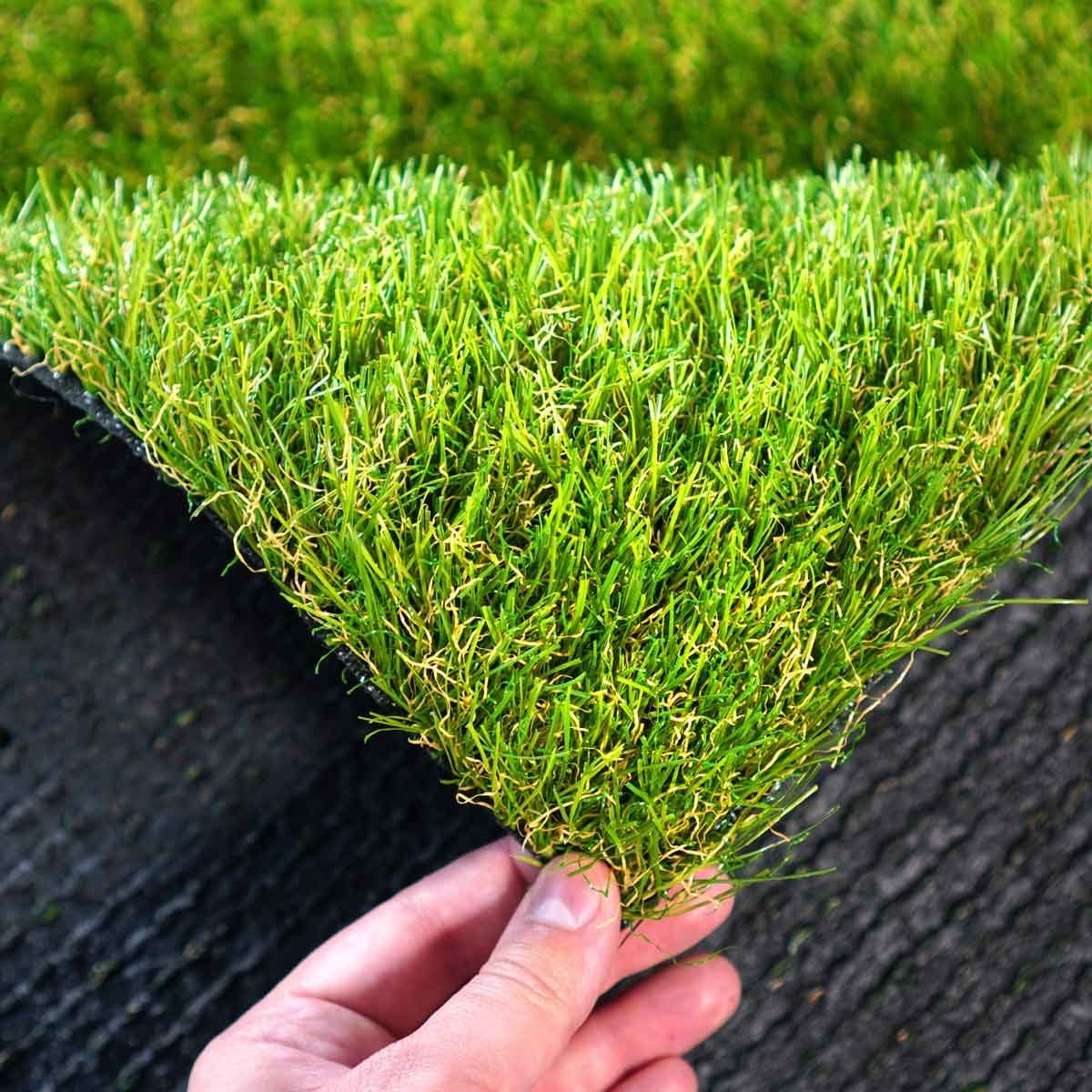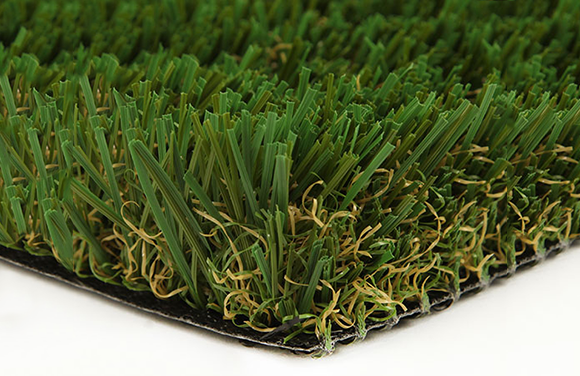Enhance Your Outdoor Space with Arizona Artificial Turf for a Lush Green Look
Enhance Your Outdoor Space with Arizona Artificial Turf for a Lush Green Look
Blog Article
Delve Into the Environmental Conveniences of Opting for Synthetic Grass Solutions
The fostering of man-made turf remedies provides a compelling possibility to deal with pressing ecological difficulties. By significantly lowering water use and reducing the application of hazardous chemicals, these choices not just promote sustainable landscape design but also shield regional communities. The reduced carbon footprint associated with lowered upkeep tasks adds to a more sustainable approach to land administration. However, the effects of these benefits prolong past mere preservation initiatives, raising concerns about their long-lasting influence on habitat conservation and overall environmental equilibrium. Exploring these dimensions exposes a complicated interaction worth thinking about.
Water Conservation Benefits
One of the most considerable advantages of artificial lawn is its capability to conserve water. In comparison, man-made turf does not require watering, substantially minimizing the overall need for water sources.
By removing the requirement for normal watering, synthetic grass contributes to lasting landscape methods and aids alleviate the environmental influence of excessive water intake. Additionally, the preservation of water includes the decrease of runoff, which can cause dirt erosion and waterway air pollution.
In addition, the installation of fabricated turf permits home owners and districts to allot water resources much more successfully, concentrating on important usages such as alcohol consumption water and farming. The change towards synthetic grass not only advertises accountable water use yet additionally aligns with wider environmental goals intended at maintaining natural deposits.
As communities significantly focus on sustainability, the water preservation advantages of synthetic grass provide a compelling case for its adoption in household and commercial landscaping projects.
Decreased Chemical Usage
The transition to synthetic grass considerably reduces the reliance on chemical treatments commonly used in all-natural yard upkeep. Typical grass administration normally includes the application of plant foods, chemicals, and herbicides to advertise growth and control insects. These chemicals can position threats to human wellness, regional wildlife, and the environment, adding to soil and water contamination.
In comparison, synthetic lawn gets rid of the demand for these dangerous substances. By lessening the release of synthetic substances into the environment, artificial grass advertises much healthier soil and water systems.
In addition, the absence of chemical overflow linked with artificial grass installments helps secure neighborhood waterways from contamination, sustaining aquatic life and preserving biodiversity. Arizona turf. As communities progressively prioritize lasting methods, selecting synthetic grass presents a practical option that straightens with ecological conservation goals. Through this shift, residential or commercial property owners can take pleasure in lavish environment-friendly spaces without jeopardizing environmental wellness, leading the way for a more sustainable future
Reduced Carbon Footprint

Moreover, the setup of synthetic grass can result in substantial water conservation. All-natural yards call for substantial quantities of water for watering, which not just includes in the carbon footprint related to water extraction and treatment however likewise stress regional water sources. On the other hand, synthetic grass requires marginal upkeep, calling for no watering, thereby considerably decreasing water usage and its connected power expenses.
Furthermore, the durability of synthetic grass adds to its reduced carbon impact. With a lifespan of up to 15 years or even more, the demand for constant substitutes is reduced, try here leading to much less waste and lower energy intake in production and getting rid of standard lawn options. In general, synthetic grass presents a lasting choice for ecologically conscious landscape design.
Environment Conservation
Environment conservation is an important consideration in the dispute over landscaping choices, specifically when contrasting synthetic grass to natural yard. All-natural grass yards commonly require extensive upkeep, including using pesticides, herbicides, and plant foods, which can adversely impact local communities. These chemicals can leach right into the soil and rivers, damaging indigenous flora and fauna and interrupting neighborhood environments.
On the other hand, synthetic grass presents an opportunity to lower the environmental impact of landscape design. By selecting artificial turf, home owners can decrease the interruption of all-natural environments linked with traditional lawn treatment methods. Synthetic grass eliminates the need for hazardous chemicals, thereby shielding neighboring wildlife and keeping the integrity of surrounding environments. The installation of synthetic grass can lead to the conversion of previous lawn locations right into even more biodiverse landscapes, such as pollinator yards or indigenous plant locations, which can browse around here sustain regional wild animals.
Inevitably, the change to synthetic grass not just saves water and decreases maintenance initiatives but additionally cultivates a much more harmonious relationship in between human tasks and the native environment, advertising environment preservation while doing so.
Long-Term Sustainability
Long-term sustainability is an essential consider reviewing the benefits of synthetic turf over typical lawn lawns. Among one of the most considerable benefits of synthetic grass is its toughness; it can last as much as 15-20 years with minimal maintenance, whereas all-natural turf requires constant reseeding and replacement. This long life minimizes the demand for constant sources, such as water, fertilizers, and chemicals, which are necessary for maintaining a healthy and balanced grass yard.
Additionally, synthetic grass contributes to a reduction in carbon exhausts related to grass care equipment. Traditional yards frequently call for gas-powered mowers, trimmers, and blowers, every one of which contribute to air pollution. Arizona turf. In contrast, synthetic grass eliminates the need for such devices, advertising a cleaner environment
In addition, the production of man-made lawn progressively makes use of recycled products, enhancing its sustainability account. As suppliers adopt eco-friendly practices, the ecological impact of artificial grass remains to lessen.

Conclusion
The fostering of synthetic turf services offers considerable environmental benefits, including significant water conservation, lowered reliance on harmful chemicals, and a reduced carbon footprint. Moreover, synthetic grass aids in maintaining natural environments by minimizing land disruption and advertising long-lasting sustainability with the usage of long lasting products. Collectively, these variables underscore the capacity of synthetic grass to contribute favorably to ecological health and use a sensible alternative to standard landscape design techniques in an increasingly resource-conscious world.
In comparison, fabricated turf does not need watering, substantially lowering the overall demand for water resources. By lessening the launch of artificial compounds into the community, man-made lawn advertises much healthier dirt and water systems.
Furthermore, the installation of official site synthetic grass can result in considerable water preservation. In comparison, man-made lawn requires marginal upkeep, calling for no watering, therefore significantly minimizing water use and its linked power prices.

Report this page